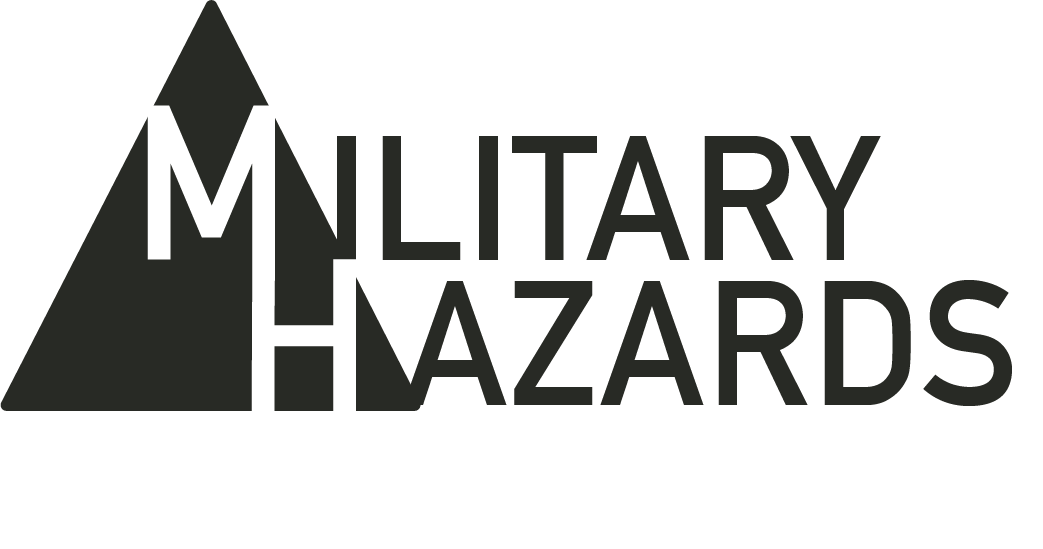Contact Our Legal Partner
"*" indicates required fields

Military service members working on arms ranges are exposed to a legion of occupational hazards. Range workers are suject to the exposure of a wide array of physical, chemical, and psychological hazards. These hazards also have the potential to cause a significant impairment on their health and safety. Because the sheer nature of the job involves handling firearms, ammunition, and explosives, employees working on an arms range are at an extremely high risk of accidents and injuries. The following article, we will discuss some of the occupational hazards most commonly associated with arms range workers.
Physical Hazards
Occupational exposure to physical hazards is, no doubt, one of the greatest concerns for employees assigned to this job duty. Outside of the most obvious dangers associated with unintended detonation, explosion, and gunfire, the following list of hazards make up some of the most common exposures experienced by arms range workers.
Noise

One of the primary concerns of working on an arms range is the noise. Because this hazard goes unseen, it poses a significant risk to those working in and around arms ranges. It should come as no surprise that gunfire produces a significant amount of noise. This noise can lead to permanent hearing loss or damage if workers do not take great care in using appropriate hearing protection. It is also important to ensure that the protective hearing equipment is being used or worn correctly to minimize the amount of noise exposure produced by the myriad of weapons used at an arms range.
Vibration
Because vibration is such a common attribute to the use of weapons on arms ranges, this hazard is largely overlooked. However, the repetitive vibration from weapons has been known to cause musculoskeletal disorders that commonly occur in the hands and arms.
Heavy Metals
Employees at arms ranges may also be exposed to lead and other heavy metals through constant physical contact with both ammunition and gunpowder. Prolonged exposure to these metals has the potential to cause lead poisoning, high blood pressure, anemia, and even brain damage. When the temperature of ammunition and weapons increases, they vaporize these compounds and release them into the atmosphere. So, even where physical contact is not present, heavy metals may still pose a significant risk.
Chemical Hazards
Outside of the dangers associated with the use of chemical weapons and other toxic warfare agents, arms range workers should also be aware of the significant risks of exposure to Chemical hazards as well. To be sure, arsenic, cadmium, chromium, along with many other other toxic chemicals are common materials used in the manufacturing of ammunition as well as gunpowder. For this reason, workers who handle these materials are at a higher risk of exposure. Such exposure may lead to respiratory problems, skin irritations, drowsiness, confusion, and seizures. Indeed, as the frequency of the exposure increases, so do the health risks. Some chemicals, such as trinitrotoluene (commonly known as TNT) and nitroglycerin, are highly explosive and can pose a significant risk of injury and even death if mishandled or misused.
Psychological Hazards
Working at an arms range can be psychologically challenging, in part due to the regular handling of firearms. Range workers oftentimes report feeling stress, anxiety, and other mental health issues due to the nature of their work. Further, range worker may also be exposed to traumatic events, like accidents or suicides. In turn, these experiences may have long-term effects on their mental health.
Preventing Occupational Hazards
In order to prevent occupational hazards, range workers should, and usually do, receive appropriate training and are provided with the necessary personal protective equipment (PPE) they need to stay both physically and mentally safe. In the course of their training, range workers should learn techniques for the safe handling of firearms, ammunition, and explosives. In addition, they should also learn how to identify and respond to potential hazards. For this reason employers should also offer and provide regular health checks-ups and monitor the exposure of their workers to noise, chemicals, and other hazards that are common on arms ranges.
By now it should be clear that arms range workers may be exposed to a wide range of occupational hazards. Certainly the list of potential risks associated with this type of work does not stop with the most common physical, chemical, and psychological risks we have just discussed. Any time an individual is within the proximity of a weapon their risk of being harmed increases exponentially. To prevent these harms from occurring, range workers should take care to receive the necessary and appropriate training required for the position. By taking these precautions, employers can ensure that their workers remain safe and healthy while performing their job function.
